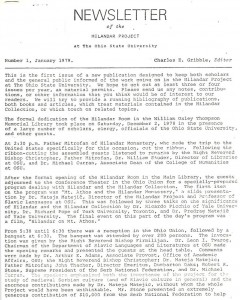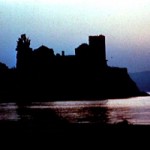In volume 9 (June 1984) of Polata knigopisnaia: an Information Bulletin Devoted to the Study of Early Slavic Books, Texts and Literatures, there is the feature , “ОБЬЩЕѤ ЖИТИѤ” [Ob’shtee zhitie], which provides a list of ongoing projects and recent publications of scholars in the field of Early Slavic studies. Dr. Nikolai Predov, “a psychiatrist and an active member of the Naučno družestvo po istorija i teorija na naukata, which, since 1982, publishes Sbornik ot naučni trudove i material i po istorija i teorija na naukata i tehnikata,” reports on several articles in the second volume (Sofia, 1983), which would be of interest to Polata knigopisnaia readers.
S.A. Vardaian, “Opyt armianskoi narodnoi mediciny v srednevekovnykh lechebnikakh X-XV vv.,” 167-179. ‘The practice of Armenian folk medicine in medieval manuals of folk remedies in the 10th-15th centuries.’
V. Vasilev, “Herbariiat na Psevdo-Apulei,” 188-203. ‘The Herbaria of Pseudo-Apuleius.’
N. Predov, M. Apostolov, “Novoto v bŭlgarskata manastirska psikhiatriia prez Srednovekovieto i neinata priemstvena vrŭzka s drevnata psikhiatrichna praktika,” 213-231. ‘Innovation in Bulgarian monastic psychiatry during the Middle Ages and its successful connection with ancient psychiatric practice.’
I. Galčev, “Bŭlgari v Dubrovnik prez srednite vekove. Nikola Bulgar – knizovnik, lekar i diplomat,” 232-246. ‘Bulgarians in Dubrovnik during the middle ages. Nikola Bulgar – scribe, doctor and diplomat.’




